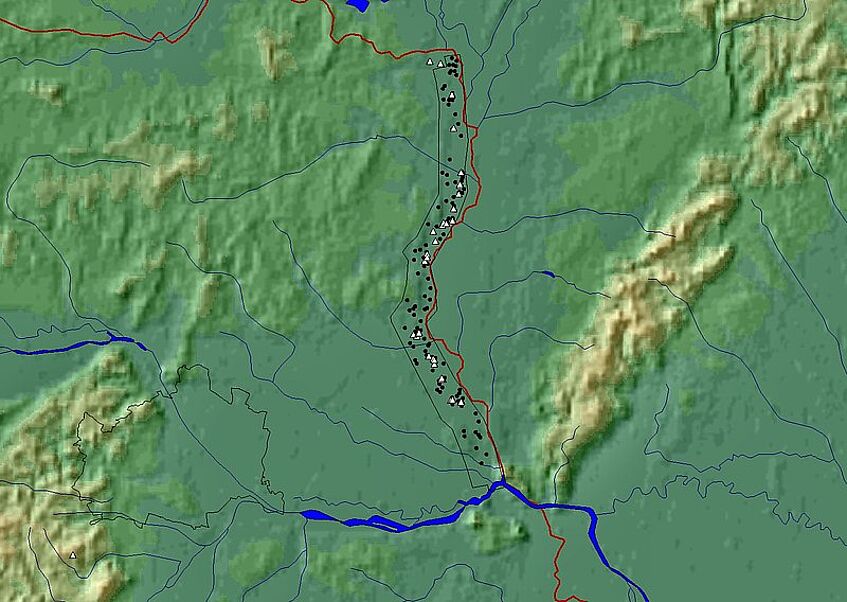Today, most of the photographs have a format of 23 by 23 cm. Every photograph has a strip containing subsidiary information on its border. You can find here:

(1) a project field with useful information about when and why the photograph was taken
(2) a clock, which can be helpful, if you don´t know how to orientate the picture (where is the north direction?)
(3) the calibrated focal length, which is needed during photogrammetrical analysis; most of our photographs were taken with a focal length of about 150 mm (wide angle) or 210 mm (medium angle)
(4) the bubble showing you, if the photograph is in fact a vertical one
(5) the serial number of the camera, which is needed to identify the right calibration protocol
(6) an altimeter, which is useful to estimate the scale of the photograph
(7) and the number of the photograph.
If it is flown at the right moment, vertical photography will document plenty of archaeological sites in 3D within a very short time. On the other hand the vertical view is not always the best. The experienced photographer will usually find the best angle for documentation, as long as he/she can move around the site without any obstacle (border...). However, when reconnaissance is at stake, it is far more important to detect sites at all than to document the faintest detail of its structures. Therefore vertical photographs should be part of every reconnaissance strategy; especially in those cases, where the time for oblique flights is limited or where obstacles (borders etc.) hinder or prohibit free movement in the air.
If a vertical block has to be ordered on the free market, it will be very expensive. Therefore aerial archaeologists will have to make contacts with other organisations that can provide them with verticals at a reasonable price. More than 20 years of experience with oblique and vertical photographs have led us to the conviction that both sources are of great value to aerial archaeology. There are pros and cons for both and if reasonably used, they will complement one another.

